Deprecated: Creation of dynamic property TableHelper::$table_subview is deprecated in /home/roulette/public_html/wp-content/plugins/rm-data-central/tables/TableHelper.php on line 116
Roulette traces its origins back more than 300 years, making it the oldest of all modern-day casino games. But where did it come from? Who started it all? And how did roulette come to be so popular all over the world? Here, we will look at its accidental creation from the ashes of a failed scientific study, how it gained popularity as a favourite pastime of the French aristocracy and later the gold-digging pioneers of the American West, and its evolution into the classic table game we all know and love today.
Best roulette casinos
17th Century: The Beginning
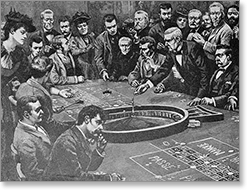

The godfather of roulette was Blaise Pascal, one of the great polymaths of 17th century Europe. The name may ring a bell if you ever took a high school mathematics class – he created Pascal’s triangle – but relatively few people will be aware of his connection to the devil’s wheel.
In the simplest terms, Pascal invented roulette by mistake. During the mid 1600s, the Frenchman was attempting to disprove the laws of thermodynamics and achieve perpetual motion – a goal that still eludes physicists to this very day. The idea was to build a machine that could maintain velocity for eternity without any external propulsion – that is, something that could remain in motion forever of its own accord, without the aide of manpower, steam, electricity, or any other additional source of power.
Pascal conducted a number of experiments and constructed several would-be perpetual motion machines, but none of them worked and he eventually turned to other, more achievable tasks. Among these failed prototypes was a small wheel with an inverted bowl-like profile, set around a vertical axle so that it rotated perpendicular to the ground. This was, in essence, the conception of roulette (French for “little wheel”).
There is a lot of speculation and no great certainty as to how much resemblance the modern roulette wheel bears to Pascal’s prototype; some say very little, while other sources claim he went as far as to conceive the current-day arrangement of pockets numbered 0 to 36. Regardless, it would be more than a century before this failed physics project began to attract real attention as a game of chance.
18th Century: Early Roulette in Paris
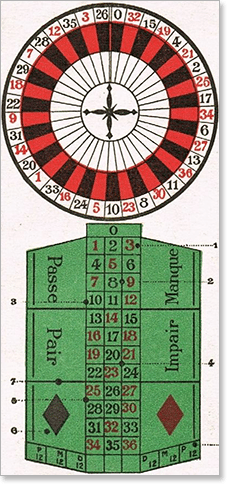 The game of roulette is a hybrid of several different pastimes involving a wheel and/or a board – including Aces and Hearts, Roly Poly, and Reiner from England, and Italian board-games such as Biribi and Hoca. Roulette as we know it today was first played in Paris near the end of the 18th century, where it had become a popular form of gambling among the French nobility and the Parisian social elite.
The game of roulette is a hybrid of several different pastimes involving a wheel and/or a board – including Aces and Hearts, Roly Poly, and Reiner from England, and Italian board-games such as Biribi and Hoca. Roulette as we know it today was first played in Paris near the end of the 18th century, where it had become a popular form of gambling among the French nobility and the Parisian social elite.
These early versions of casino roulette featured 38 panels, numbered 1 through 36 with two extra pockets marked zero (0) and double zero (00) – just like the modern American roulette layout. It allowed players to make most of the bets we see in European and French roulette today – from straight-up gambits on a single number, to even money wagers on red or black, to call bets on certain sections of the wheel (neighbours, voisins du zero, tiers du cylindre, et cetera).
The only major difference is the zero and double zero panels used to be coloured red and black, respectively, like the rest of the numbers. This caused some confusion back in the day, as these two pockets have always effectively belonged to the bank – that is, they are not included in outside wagers, which is how the house edge is generated in roulette (5.26 per cent on a double-zero layout). You can imagine how a first-time player might have been a trifle upset to learn that his bet on red was lost despite the ball landing on a red zero pocket. Hence, all zeros and double zeros are now green.
19th Century: From Monaco to the Mississippi
Up until the 1840s, roulette was almost exclusively played on a double-zero layout throughout north-west Europe. A couple of enterprising Frenchmen changed all that when they introduced the revolutionary single-zero table at their casino in Bad Homburg, Germany. The elimination of the double-zero panel improved the player’s odds dramatically, lowering the house edge by over 2 per cent. This proved a hugely successful innovation, attracting gamblers from all over and making Bad Homburg one of Europe’s premier gambling hubs – for a while, at least.
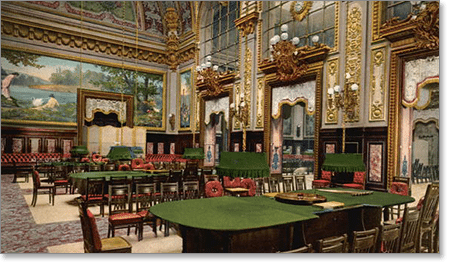

When you connect the dots, it is no surprise that roulette found its way to North America in the 1800s – French influence was very strong there in those days, from Louisiana to Quebec. The denizens of New Orleans embraced the game, which gained great popularity on the big paddle steamers that cruised up and down the Mississippi. From there it spread all across the American frontier – a.k.a. the Wild West – where crooked operators ran dodgy games to swindle miners out of their gold.
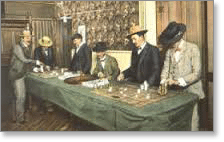

20th Century to Now: Roulette Today
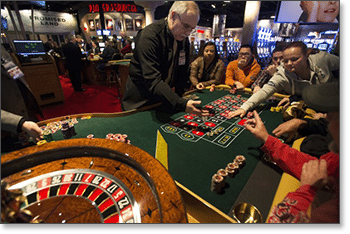

Australia is no exception. The last few decades have seen top-notch casino complexes flourish all over the country, with traditional roulette games available at gambling venues in every major city. To find out where you can play roulette in your state or territory, check out our list of Australian land-based casinos.
See also:
Popular Australian Casino Cruises
Where to Play Roulette in New Zealand
Roulette Terminology



